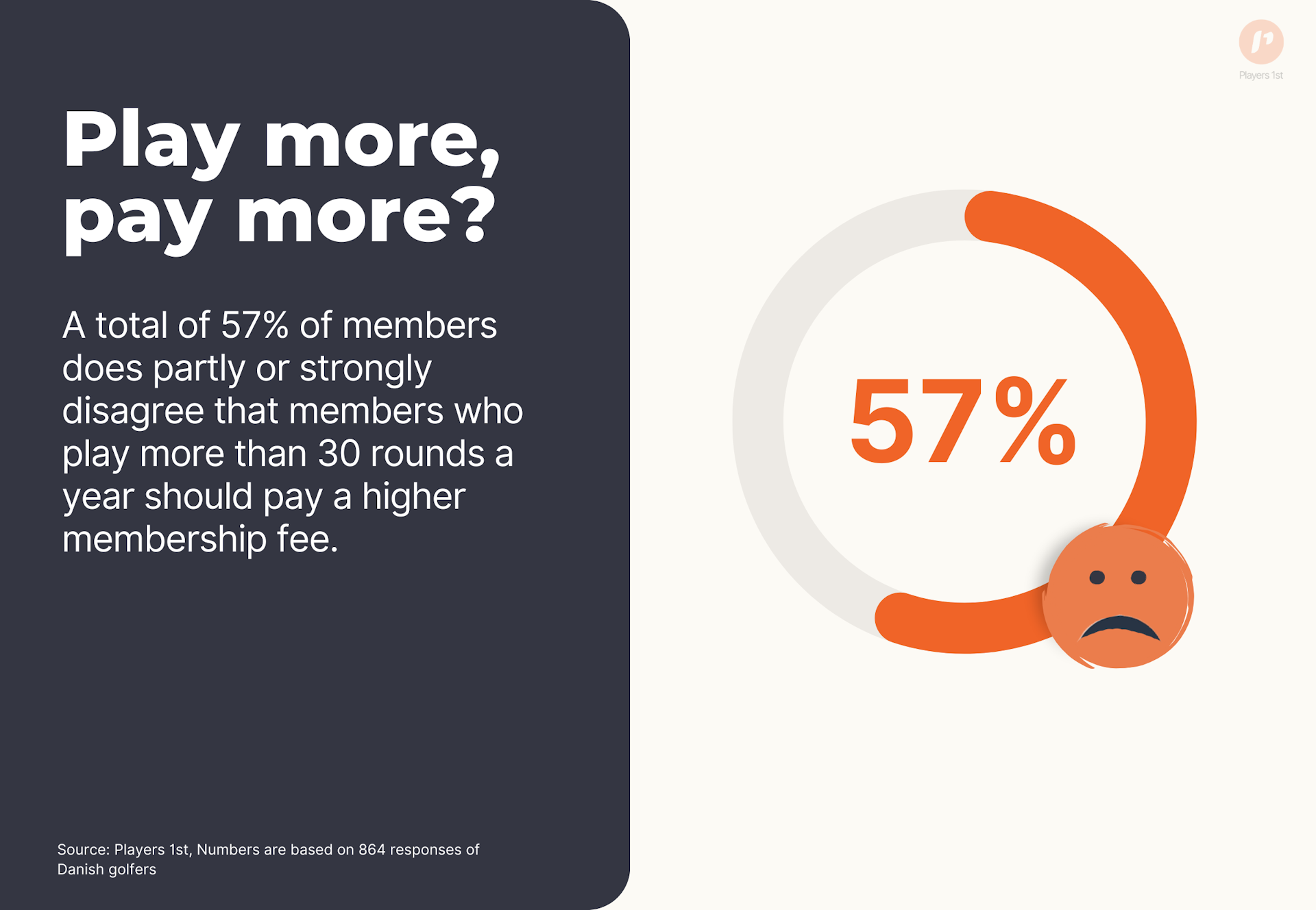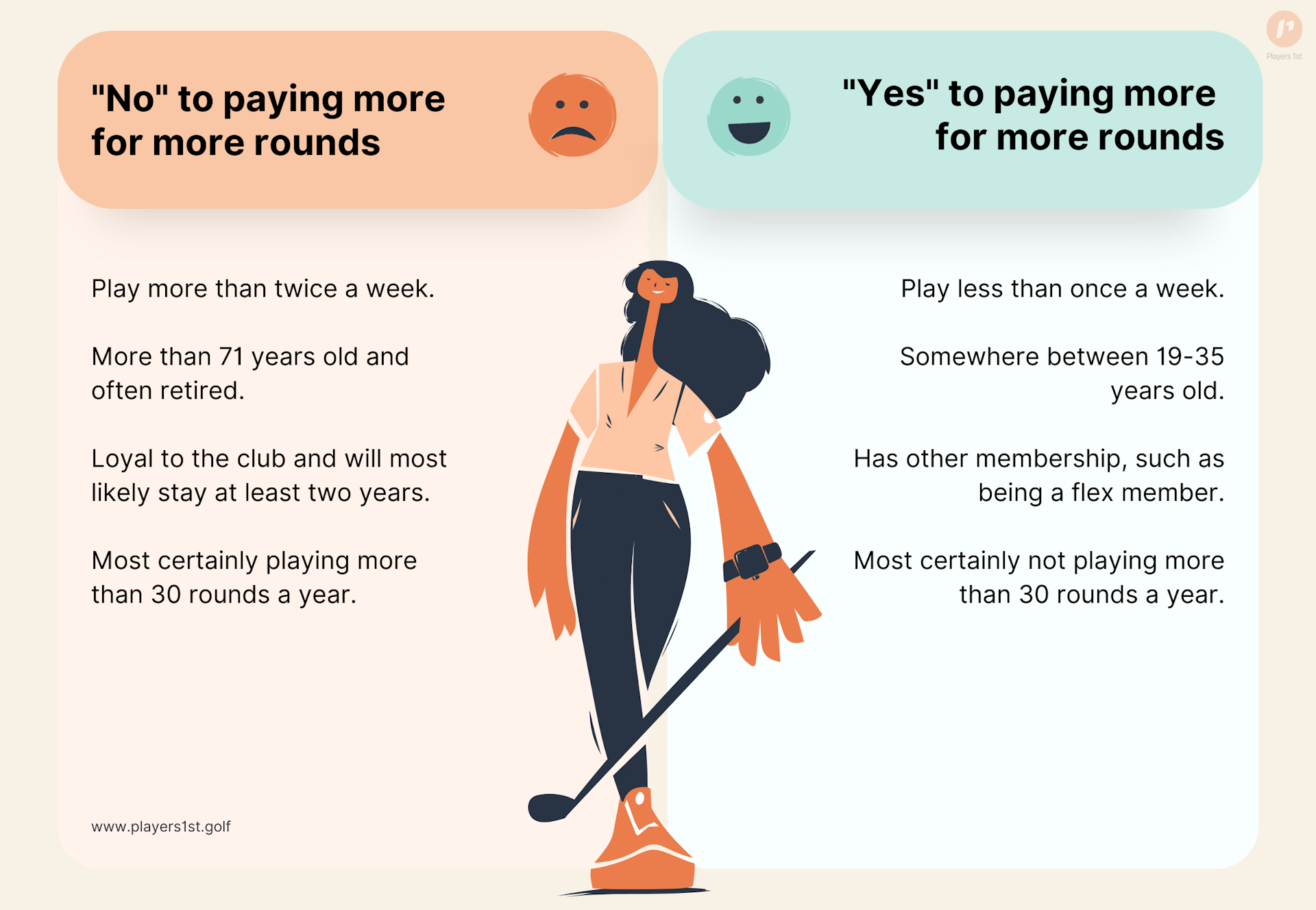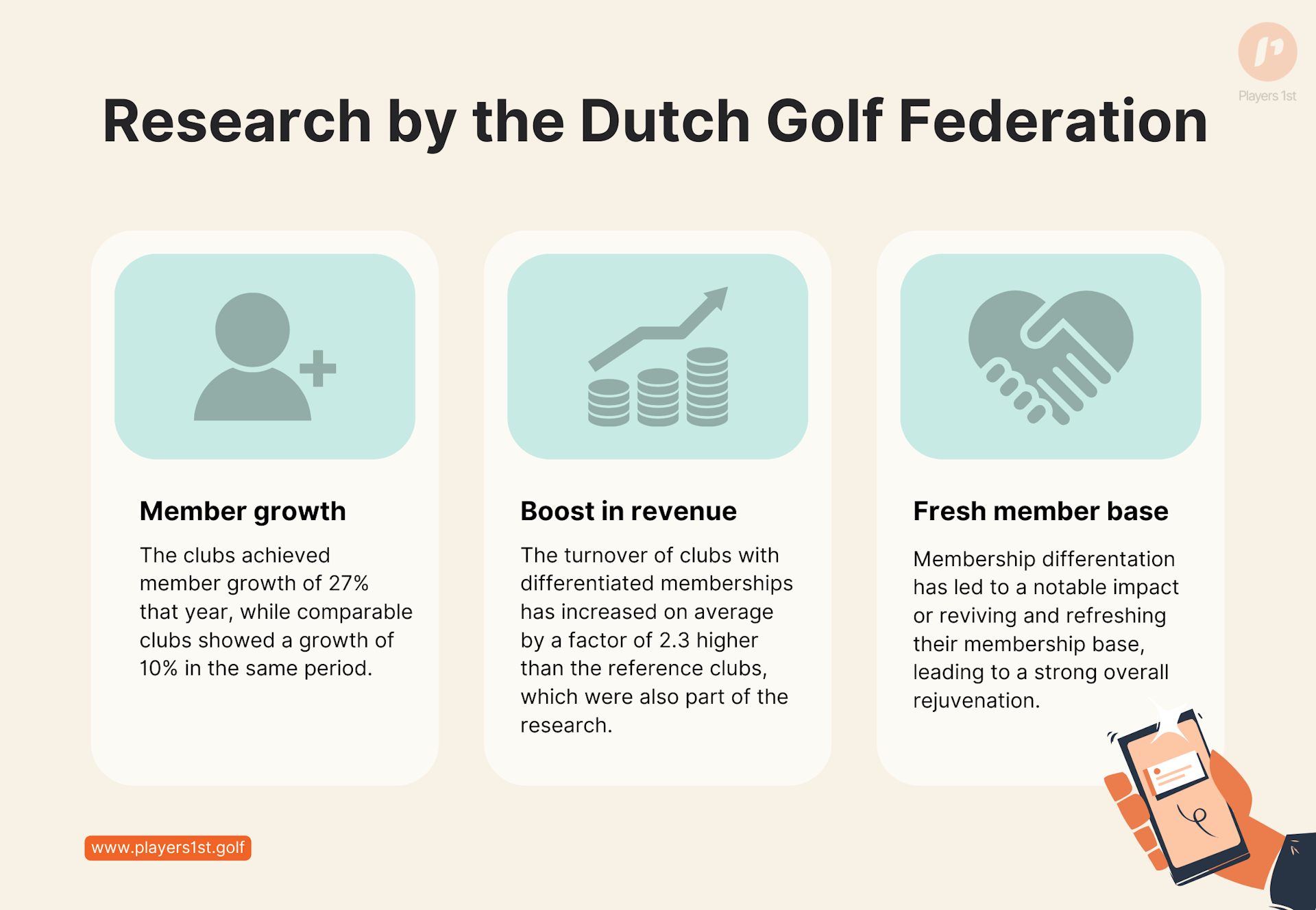Paying more when playing more might be the future of memberships
Not all club members play the same number of rounds in a year. Far from it. Yet, the membership fee is the same for all full-time members. Of course, the members who hit the course the most prefer this setup. But have you ever wondered what would happen if you linked the fee to the number of rounds played?

Every fifth member plays at least 30 rounds yearly at their home club. And if you're a part of this most dedicated group of members, chances are you're averaging nearly 52 rounds each year.
The rest of the members play fewer than 30 rounds a year. And if you belong to this group, your golf bag is likely a bit dusty. On average, this group of members only manages to play around 9 rounds each year at their home club.
What does this mean? Well, the gap in rounds between the two groups can be translated into a roughly 170-hour difference in time spent on the greens. Yes, you read that correctly. Some members enjoy at least 170 more hours of golf each year compared to the rest.
Yet, all these full-time members pay the same membership fee.
Naturally, this raises an interesting question about fairness: Should those who tee off the most also be the ones who pay the most?
The fairness of memberships depends on usage
The fact that not all members play the same number of rounds isn't news. Actually, it's pretty common for about half of the members to only play around 5% of the rounds played at the club. When you quickly check out this statistic, it's puzzling how this could ever be fair.
Well, this differing usage among members is typically a result of service-based memberships and subscriptions.
Some members hit the gym more often than others. Some subscribers get closer to their mobile data package limit than others. And some commuters use their travel card for a longer distance than others. Despite paying the same fee for a package or subscription, certain people just tend to make greater use of the product or service compared to others.
This applies to golf as well. At least to some extent. In general, golf stands out from most other memberships because of its high membership fee. If a member doesn't play golf regularly, the cost of a single round skyrockets.
But what if we turned things around? What if memberships favored those who play fewer rounds while becoming pricier for those who play the most, all based on the number of rounds played?
None is interested in paying more…
If you ask members whether they'd be okay with the idea that more rounds played should result in a higher fee, you won't see everyone nodding with excitement.
Out of all the members, 57% either partly or strongly disagree that members who play more than 30 rounds yearly should pay a higher membership fee. On the flip side, 25% either totally or partly agree. And this is where the conflict comes in.
Suddenly, you're faced with two groups of members who either think this idea is bad or brilliant. And you might have already guessed which members belong to which group.
The ones who support this idea are those who play fewer than 30 rounds each year. Basically, these members believe it would be fair if those who play the most have a membership more tied to the number of rounds they play. It's like an attempt to level the playing field, you could say.
On the flip side, the ones who aren't as thrilled about the possibility of higher fees are those who already play over 30 rounds each year. And they've got a point. After all, this membership model could result in them paying more for their membership. No wonder they're not exactly jumping for joy at the thought of change.
As this ongoing debate continues, sticking with what's familiar is tempting. No big changes, no big churn. But a case from the Netherlands presents an eye-opening twist. It reveals how your revenue could actually increase if you offered memberships based on rounds played and members' preferred tee times – eventually making the golfers who play the most pay the most.
…but they are still willing to pay more
In the beginning of 2020 and the end of 2022, the Dutch Golf Federation reached out to over 60 clubs for a research project. The aim? To dig into whether it makes sense for golf clubs in the Netherlands to offer memberships based on how often members play and when they prefer tee times.
First, the study pointed out a quite obvious point: if you cut costs for those who don't play as much without increasing the price for the one who plays the most, you're naturally bound to see a dip in revenue. The catch is that the higher payment from the most dedicated members is needed to balance out the lower fees for others. The study also showed that when members choose their membership, over half of them decide based on how often and when they prefer to play.
Based on these findings, the Dutch Golf Federation saw an opportunity to introduce a broad range of memberships that could cater to members' different needs. For this reason, the federation encouraged some clubs from the research to roll out new membership options based on tee times and the number of rounds played. As a result, just over 60% of the test clubs' members chose these options over the traditional "unlimited play" membership.
And what happened afterward?
Even though this article has revealed that most members don't like the idea of paying extra for playing more, the clubs that actually tried this Dutch research-based membership approach got incredible results.
After introducing the new membership model, these clubs welcomed 27% more members in just a year, while similar clubs that kept the old approach experienced only a 10% member growth.
On average, this also fueled a 2.3x higher revenue increase compared to clubs that kept the old approach. And the overall outcome? More engaged members, a surge in young golfers, and a refreshed club atmosphere and member base.
These results show that memberships based on how much and when members play can change how we view golf club memberships in the future. Because even though many members claim to be against this membership model, rolling it out won't necessarily push them to leave. Well, at least in some clubs.
You see, unfortunately, not every club is cut for this approach. After all, clubs have different challenges, membership structures, and other reasons that will make it riskier to change the membership fees. One of them could be the traits of their existing members, which is something worth always keeping in mind when changing or increasing membership fees.
But with the Dutch Golf Federation's insights in mind, some clubs should maybe think about tweaking their membership model to give a nod to those who don't play as many rounds in the future. It could pump up their revenue and give them a competitive edge down the road.
About the results
The results about the members characteristics and attitude towards changing the membership model included within the first three paragraphs in this article are withdrawn from Players 1st's "Voice of Golfers" panel, which is recruited in connection with the conduct of our CX surveys in several countries.
The specific findings mentioned in this article are based on 864 responses from Danish golfers. All results are weighted in relation to gender, age, type of golfership, how often one plays golf, NPS, Loyalty, and what type of golfer you are (very attached to the club or more independent of the club and its activities).
Other stories
Night golf is lighting up the course - but what is it all about?
Virtual Reality opens digital doors for golfers to explore
How AI can help improve the future of golf lessons
Drones, robots, and AI shape a green future with fewer chemicals on courses
AI-driven irrigation increases sustainability and cut expenses
Tee time mastery: Elevating golf experiences with AI optimization
This can make or break job satisfaction among golf pros
What greenkeepers value most in their jobs
Shorter rounds keep female golfers on your fairways
Golfers have spoken: We want rounds with fewer holes
Half of the members play just 5% of all rounds: Do they get value for money?
Effective course maintenance communication equals happy guests
The sweet spot: Finding the best scale of membership fee increases
Raise the fee with no fear if your members are satisfied
Where is golf headed in 2023?
Let us ping your mailbox
Boost your club’s member and guest experience to stay ahead of the game! Unlock expert insights, pro tips, inspiring club success stories, and more…

















